Results 10,141 to 10,150 of 12094
Thread: Anandtech News
-
12-12-19, 11:23 PM #10141
Anandtech: Microsoft Announces Xbox Series X: Available Holiday 2020
Microsoft this evening has finally given their long-awaited next generation gaming console a name, announcing the Xbox Series X. The device, formerly known as Project Scarlett, is said to be four times more powerful than the current Xbox One X, and along with its new Xbox Wireless Controller will be available in the Holiday 2020 timeframe.
Microsoft has been drip-feeding information about their forthcoming console for the better part of a year now, so today’s announcement of the name and revealing the final design is the latest element in that campaign. The black, monolith-shaped box is certainly unlike any previous Xbox console design, and while touching it probably won’t make you smarter, Microsoft has definitely evolved the design of their hardware. The same goes for the new Xbox Wireless Controller that ships with the console, which incorporates an unusual D-Pad derived from the Xbox Elite Series 2 Wireless Controller. The controller will be compatible with Windows 10 as well.
While Microsoft is still not offering a detailed breakdown of hardware specifications at this time, the company has reiterated their E3 announcement – that the box is powered by an AMD APU combining their Zen 2 processor cores and next generation RDNA architecture – while revealing the first performance estimate for the console: four times the processing power of the Xbox One X. It’s not clear here whether Microsoft is talking about CPU performance, GPU performance, or both – but given that even AMD’s fastest discrete GPUs today don’t exceed 10 TFLOPS, it is likely a reference to the CPU side of matters and AMD’s much faster Zen 2 CPU cores (and going by comments made to GameSpot, this seems to be exactly the case).
As well, the company is reiterating the technical features for the console: hardware raytracing, variable rate shading, Xbox One backwards compatibility, and a “next-generation” SSD. All of which will be used to offer games at 4K@60fps or better, with Microsoft indicating that 120fps will also be an option for developers (no doubt driven by the high refresh rates allowed by HDMI 2.1). In their press release Microsoft is also announcing a new feature called “Dynamic Latency Input” (DLI), which although no specific details about the technology are being made available, is intended to minimize console latency in order to make it “the most responsive console ever”. I would expect to hear more about this in 2020 as the console gets closer to launch.
Finally, along with announcing the console itself, Microsoft has also released a separate video announcing a new Hellblade game, Senua’s Saga: Hellblade II. The trailer for the game is designed to show off the power of the console and is based off of in-engine footage; though it’s not clear at this time if it was captured in real-time or rendered offline.
Expect to hear a lot more about the Xbox Series X over the next year, as Microsoft ramps up to launch it for Holiday 2020.
More...
-
12-13-19, 10:26 AM #10142
Anandtech: The Microsoft Surface Laptop 3 Showdown: AMD's Ryzen Picasso vs. Intel's I
Occasionally the stars align. It is very rare in the laptop space that we're able to test two devices, with two very different CPU platforms, with the fewest number of variables possible. But those stars have aligned in 2019, and thanks to Microsoft's Surface Laptop 3 family, we have a rare opportunity to compare AMD and Intel's current-generation laptop platforms in a way that wouldn't normally be possible.
To that end, today we're having the ultimate laptop showdown of 2019: Surface Laptop 3 vs. Surface Laptop 3, pitting AMD's Ryzen Picasso platform against Intel's Ice Lake platform. Both companies have made significant gains this year with their latest laptop platforms, and now we're finally getting the chance to see, in an apples-to-apples-fashion, just how the two platforms compare.
More...
-
12-13-19, 08:41 PM #10143
Anandtech: LG Updates Ultralight Gram Laptops & Convertible: Ice Lake Inside
Along with their flagship 17-inch model, LG this week has also given its 14 and 15.6-inch LG gram laptops an Ice Lake upgrade. The updated machines pair Intel’s Ice Lake processors with up to 24 GB of RAM, all contained within the gram's minimalist, ultra-thin carbon magnesium alloy body, with a total weight of around 1 kilogram. The new LG gram notebooks and convertible will be available next year.
The 2020 LG gram mobile PCs are powered by Intel’s 10th Generation Core processor (Ice Lake) with up to Iris Plus Graphics. The CPU is cooled down using LG’s Mega Cooling System, though the only thing that the company says about it is that it runs cool and quiet ‘under all usage scenarios’. The updated notebooks can be equipped with up to 24 GB of DDR4-2666 memory, whereas the convertible only supports up to 16 GB of RAM. Meanwhile, all the machines feature two M.2 slots for a couple of NVMe SSDs to provide both speed and capacity.
Being premium consumer laptops, LG’s next year gram systems come equipped with a robust set of I/O capabilities, which includes Wi-Fi 6, Bluetooth, Thunderbolt 3, USB 3.1, HDMI, microSD/UFS slot, and a 3.5-mm audio jack for headsets. As far as multimedia features are concerned, the notebooks have a webcam, DTX X Ultra-badged speakers, and a microphone array. Finally, they also have a fingerprint reader.
One of the key selling points of LG’s gram mobile PCs is their long battery life. The new 14-inch machines will use a 72 Wh battery, whereas the 15.6-inche will come with an even larger 80 Wh battery. The maker says that the convertible LG gram 2-in-1 machine will work for over 20 hours on one charge, and the 15.6-inch model should be able to last for even longer.
LG will demonstrate its new portables at CES 2020 in early January. Expect the company to disclose more information about pricing and availability timeframes there as well.The LG Gram 2020 Brief Specifications LG Gram 2-in-1
14T90NLG Gram 14
14Z90NLG Gram 15
15Z90NSize 14-inch IPS 15.6-inch IPS Screen Resolution 1920×1080 Touch Support LG's IPS In-Cell Touch technology - - Color Gamut ? over 96% sRGB Protection Corning Gorilla Glass 6 - - CPU Family 10th generation Intel Core processors (Ice Lake) Model various Graphics Intel UHD Graphics Intel UHD Graphics or Intel Iris Plus Graphics RAM up to 16 GB DDR4-2666
onboard + SO-DIMMup to 24 GB DDR4-2666
onboard + SO-DIMMStorage up to two M.2 NVMe SSDs Wi-Fi + BT Wi-Fi 6 + Bluetooth USB 2 × USB 3.1 Type-A1× USB 3.1 Gen 2 via TB33 × USB 3.1 Type-A1 × USB 3.1 Gen 2 via TB3Thunderbolt 3 1 × Thunderbolt 3Fingerprint Sensor Yes Audio Microphone array, DTS X Ultra stereo speakers, TRRS jack Other I/O MicroSD card reader, webcam, etc. Battery 72 Wh 80 Wh Battery Life over 20 hours many hours many hours Dimensions Width 324.6 mm | 12.78 inch 323.4 mm | 12.73 inch 357.6 mm | 14.08 inch Depth 210.8 mm | 8.3 inch 209.8 mm | 8.26 inch 225.3 mm | 8.87 inch Thickness 17.9 mm | 0.7 inch 16.8 mm | 0.66 inch 16.8 mm | 0.66 inch Weight 1145 grams | 2.52 lbs 999 grams | 2.2 lbs 1120 grams | 2.47 lbs
Related Reading:
- LG’s Lightweight Gram 17-Inch Laptop Gets Intel’s Ice Lake CPU
- LG Releases Gram 17 Laptop: An Ultra-Thin Notebook with a 17.3-Inch Display
- LG Gram 2018 Laptops Unveiled: Quad-Core i5/i7, TB3, ~2.2 Lbs, 22 Hrs
- Razer Unveils New Blade Stealth 13: Quad-Core Whiskey Lake, dGPU, 4K UHD
- ASUS Unveils Ultra-Thin ZenBook Pro 15 with Six-Core Core i9, GTX 1050, Calibrated 4K LCD
Source: LG
More...
-
12-13-19, 08:41 PM #10144
Anandtech: Western Digital Rolls-Out Two New SweRV RISC-V Cores For Microcontrollers
Western Digital has added two new processor cores — the SweRV Core EH2 and the SweRV Core EL2 — into its SweRV portfolio of microcontroller CPUs. And, keeping in line with past parts, and the company has made their register-transfer level (RTL) design abstraction available to the industry for free. In addition, the company has also introduced the first hardware reference design for OmniXtend cache coherent memory over Ethernet protocol, and transferred management and support of the architecture to Chips Alliance.
More...
-
12-16-19, 09:58 AM #10145
Anandtech: Samsung Unveils Galaxy A51 & Galaxy A71 Mid-Range Smartphones: 6.5/6.7-Inc
While Samsung draws most of its smartphone reputation from its high-end phones, the bulk of the phones that the company sells are are not the $700+ Galaxy S series, but rather the cheaper phones that fill out the lower parts of its product stack. To that end, Samsung has unveiled its new mid-range Galaxy A51 and Galaxy A71 smartphones, which are designed to strike a better balance between features and the handset's cost.
As their model numbers suggest, Samsung’s Galaxy A51 and Galaxy A71 smartphones are designed for different price points, yet they have many similarities. Both handsets come in a plastic body, which depending on the model houses either a massive 6.5-inch (A51) or a 6.7-inch (A71) Infinity-O Super AMOLED. Both models get similar panels, each sporting a 2400:1080 resolution as well as an ultrawide 20:9 aspect ratio. The display in turn is protected with Corning's Gorilla Glass 3, which although not the latest and greatest there, is not particularly surprising (nor a bad choice) since, unlike the S-series, these smartphones are not water-tight.
Meanwhile, with cameras being one of the big selling points for flagship phones this past year, Samsung has tried to bring as much of this down to their mid-range phones as possible. Both smartphones feature a quad-module rear camera setup, consisting of a 48 MP or a 64 MP main module, a 12 MP ultrawide module, a 5 MP depth sensor, and a 5 MP dedicated macro module. As always, we'll have to see how well these camera modules actually work once the phones are shipping, but it's a surprisingly aggressive number of modules to ship a cheaper phone with. Finally, rounding out the camera collection for both phones is a 32 MP punch-hole selfie camera.
As for internal hardware, the Galaxy A51 is powered by the Exynos 9611 SoC, which offers 4 Cortex-A73 cores plus 4 Cortex-A53 cores. This is paired with paired with 6 GB of RAM and 128 GB of NAND flash storage. Meanwhile the Galaxy A71 is based on the Snapdragon 730 – a 2x Cortex-A76 plus 6x Cortex-A55 SoC – accompanied by 6 GB or 8 GB of memory, as well as 128 GB of NAND. The new smartphones obviously support 4G/LTE, Wi-Fi 5, Bluetooth 5.1, navigation, a USB 2.0 Type-C port, an under-screen fingerprint reader, and integrate a 4,000 or 4,500 mAh battery respectively.
So far, Samsung has introduced its Galaxy A51 and Galaxy 71 in Poland and Vietnam and while other markets have not yet been announced, it's only a matter of time (and presumably after the new year). The A51 will be available in Vietnam in late December, so expect the A71 to hit the market a bit after that.Samsung's Galaxy A51 & Galaxy A71 Smartphones
Brief SpecificationsGalaxy A51 Galaxy A71 Display SAMOLED
6.5"
2400x1080
20:9
Corning Gorilla Glass 3SAMOLED
6.7"
2400x1080
20:9
Corning Gorilla Glass 3SoC Samsung Exynos 9611
4 x Arm Cortex-A73 @ 2.3 GHz
4 x Arm Cortex-A53 @ 1.7 GHz
Arm Mali-G72 MP3Qualcomm Snapdragon 730
2 x Kryo 470 Gold (CA76)
@ 2.2 GHz
6 x Kryo 470 Silver (CA55)
@ 1.8 GHz
Adreno 618RAM 6 GB 6 GB or 8 GB Storage 128 GB of NAND flash
microSD128 GB of NAND flash
microSDLocal Connectivity Wi-Fi 802.11ac Wi-Fi Bluetooth Bluetooth 5.0 Data/Charging USB 2.0 Type-C Audio 3.5-mm jack
stereo speakers
active noice cancellationNFC depending on the market 4G/LTE Yes Navigation A-GPS, GLONASS, BDS, GALILEO Rear Camera Main 48 MP, f/2.0, 1/2", 0.8µm
PDAF64 MP, f/1.8, 1/1.7", 0.8µm, 26 mm
PDAFUltrawide 12 MP, f/2.2, 13mm Depth 5 MP, f/2.2 Macro 5 MP, f/2.4 Main Lense Assembly ? ? Front Camera 32 MP, 1.28", f/2.2, 0.8µm Battery Capacity 4000 mAh
15 W fast charging4500 mAh
25 W fast chargingExpected Life ? ? SIM Size Nano SIM, single or dual Sensors accelerometer, gyro, proximity, compass Biometric Security Fingerprint Under display Facial Recognition - - Dimensions Height 158.5 mm | 6.24 inches 163.6 mm | 6.44 inches Width 73.6 mm | 2.90 inches 76 mm | 2.99 inches Thickness 7.9 mm | 0.31 inches 7.7 mm | 0.3 inches Weight 172 grams 179 grams Colors Prism, Crush Black, White, Blue, Pink Protection Drop ? ? Splashes - - OS Google Android 9.0 with One UI Launch Countries Vietnam, Poland Poland Price ~€310 ?
Related Reading:
- Samsung Unveils The Galaxy A70: A Mid-Range Smartphone With a Sizable 6.7-Inch Display
- Samsung’s A-Series 5G Smartphone: Galaxy A90 5G
- Samsung Announces Galaxy Note10 & Note10+: A Redesign With Feature Disparity
- Samsung Announces The Galaxy S10: 10th Anniversary Trio
- Samsung Announces The 2018 Galaxy A9 With Four Rear Cameras
Sources: Samsung Poland, Samsung Vietnam, GSMArena, GSMArena, Liliputing
More...
-
12-16-19, 09:58 AM #10146
Anandtech: The Snapdragon 865 Performance Preview: Setting the Stage for Flagship And
Earlier this month we had the pleasure to attend Qualcomm’s Maui launch event of the new Snapdragon 865 and 765 mobile platforms. The new chipsets promise to bring a lot of new upgrades in terms of performance and features, and undoubtedly will be the silicon upon which the vast majority of 2020 flagship devices will base their designs on. We’ve covered the new improvements and changes of the new chipset in our dedicated launch article, so be sure to read that piece if you’re not yet familiar with the Snapdragon 865.
As has seemingly become a tradition with Qualcomm, following the launch event we’ve been given the opportunity to have some hands-on time with the company’s reference devices, and had the chance to run the phones through our benchmark suite. The QRD865 is a reference phone made by Qualcomm and integrates the new flagship chip. The device offers insight into what we should be expecting from commercial devices in 2020, and today’s piece particularly focuses on the performance improvements of the new generation.
More...
-
12-16-19, 01:31 PM #10147
Anandtech: OWC Launches ThunderBay 4 Mini DAS: 4 SATA Bays With SoftRAID, Up to 1.5 G
OWC has introduced a new small form factor high performance, high redundancy DAS for the professional market. The ThunderBay 4 Mini incorporates 4 2.5-inch storage bays, allowing it to store up to 16 TB of data, and with OWC touting transfer speeds of up to 1.5 GB/s. The device is aimed at various creative professionals who need an ample amount of reliable storage space, but in a relatively small package.
The OWC ThunderBay 4 Mini DAS can accommodate four 2.5-inch/15.5 mm storage devices and is based on Intel’s JHL6540 (dual-port TB3) and ASMedia’s ASM1062 (PCIe 2.0 x2 => two SATA 6 Gbps bridge) controllers. Given constraints imposed by a SATA 6 Gbps interface and the ASM1062 chip, the ThunderBay 4 Mini can offer up to 1556 MB/s read/write performance when equipped with four SATA SSDs, or around 560 MB/s when populated with four Seagate’s 2.5-inch 4 TB hard drives. To ensure stable operation and consistent performance, the DAS comes equipped with a fan.
Layered on top of the hardware to provide both multi-disk performance and redundancy is OWC's SoftRAID software. OWC will offer the ThunderBay 4 Mini with either its SoftRAID XT or SoftRAID XT Lite software, depending on the model and required RAID level. The applications support both Apple macOS and Microsoft Windows operating systems, so the DAS is compatible with a wide variety of computers available today.OWC's SoftRAID SoftRAID XT SoftRAID XT Lite RAID Levels RAID 0
RAID 1
RAID 4
RAID 5
RAID 0+1RAID 0
RAID 1Disk Certification + + Disk Monitoring + + Email Alerts + - Command Line Interface + - Tech Support Free Online Forum
The barebones OWC ThunderBay 4 Mini with SoftRAID Lite XT costs $299.99, whereas a version with SoftRAID XT is priced at $379.99. Enclosures populated with SSDs or HDDs are priced depending on capacity and type of software that comes with them.OWC Thunderbay 4 Mini HDD Models
SoftRAID XTHDD Models
SoftRAID XT Lite4 TB $669.99 $599.99 8 TB $719.99 $649.99 16 TB $1,019.99 $949.99 SSD Models
SoftRAID XTSSD Models
SoftRAID XT Lite2 TB $819.99 $749.99 4 TB $1,149.99 $1,079.99 8 TB $2,069.99 $1,999.99 Enclosure Only
SoftRAID XTEnclosure Only
SoftRAID XT Lite0 TB $379.99 $299.99
Related Reading:
- OWC Mercury Elite Pro Dock / DAS Combo: TB3, up to 28 TB, USB 3.0, DP, GbE, SD
- OWC Unveils Second-Gen ThunderBlade External SSDs: 2800 MB/s Starting at $799
- OWC Ships ThunderBlade External SSDs, Touts SoftRAID Tech for 3800 MB/s Speeds
- HighPoint RocketStor 6618 Thunderbolt 3 DAS: 8-Bays, Up to 96 TB, 2.7 GB/s, $999
- Promise Launches Pegasus3 External Storage via TB3: Up to 48 TB, 1.6 GBps
Source: OWC
More...
-
12-17-19, 02:27 PM #10148
Anandtech: Corsair to Acquire SCUF Gaming
Corsair this week has announced that it will take over SCUF Gaming, a manufacturer of advanced gaming controllers for PCs and consoles. By acquiring SCUF, Corsair not only expands its products portfolio, but also gains further intellectual property and patents related to game controllers. The transaction is projected to be completed by the end of December 2019.
SCUF's controllers are designed to shorten players' hand movements, which in turn is intended to improve their performance. Controllers from SCUF are modular: they feature removable back paddles, customizable thumbsticks, interchangeable magnetic faceplates, exchangeable D-pads, and other components that allow owners to tailor their devices for themselves.
Corsair is not disclosing the financial terms of the private transaction, but says that SCUF will remain a separate brand within Corsair, and that SCUF will continue to operate from its headquarters in Atlanta. Since Corsair already sells mice and keyboards for gamers, SCUF will be a natural fit for the company.
Corsair has been on acquisition spree since it sold its majority stake to EagleTree and partners in mid-2017. Last year the company took over Elgato, a maker of video capture and docking solutions, whereas this year it bought Origin PC.
Andy Paul, founder and CEO of Corsair, said the following:
“We are thrilled to greatly expand our portfolio of industry-leading peripherals and enter the gaming controller space to help gamers play at their best. SCUF leads the market for performance controllers and are a key ingredient to the success of countless esports professionals. SCUF will make an excellent and winning addition to the vast lineup of award-winning CORSAIR and Elgato products.”Related Reading:
- Corsair Acquires Origin PC
- Corsair Takes Over Gaming, Video Capture, & Docking Assets from Elgato
- EagleTree and Partners Acquire Majority Stake in Corsair for $525 Million
Source: Corsair
More...
-
12-17-19, 06:20 PM #10149
Anandtech: ADATA Reveals XPG Hunter SO-DIMMs: Up to DDR4-3000, Up to 32 GB
ADATA has introduced its new family of SO-DIMMs for laptops and small form-factor desktops. The XPG Hunter DDR4 SO-DIMMs offer data transfer rates of up to 3000 MT/s and capacities from 8 GB to 32 GB, allowing typical dual-channel (dual slot) systems to go up to 64 GB of RAM in total.
ADATA’s XPG Hunter DDR4 SO-DIMMs are based on cherry-picked memory chips as well as high-quality PCBs. Like other enthusiast-class memory modules, the XPG Hunter SO-DIMMs feature XMP 2.0 SPD profiles to make it easier to set the correct speed settings. Also, to maximize stability, the modules come equipped with heat spreaders.
The XPG Hunter SO-DIMMs are set to be available in 8 GB, 16 GB, and 32 GB sizes and will be rated for DDR4-2666 CL18 and DDR4-3000 CL17 at 1.2 V operation.
ADATA did not announce MSRPs for its XPG Hunter DDR4 memory modules, but considering the fact that we are not dealing with SO-DIMMs designed for extreme PCs, it is unlikely that the new modules will be particularly spendy.ADATA's XPG Hunter SO-DIMMs Size Latency Voltage DDR4-2666 8 GB CL18 18-18 1.2 V DDR4-2666 16 GB DDR4-3000 8 GB CL17 19-19 DDR4-3000 16 GB DDR4-3000 32 GB
Related Reading:
- 32 GB Unbuffered DIMMs Listed from Eight Brands: DDR4-2400 to DDR4-4000
- Team Group Quietly Launches 32 GB DDR4 Memory Modules
- G.Skill Launches 32 GB DDR4 Modules, 256 GB Kits: Up to DDR4-4000
- Corsair Unveils 32 GB Vengeance LPX DDR4 DIMMs, 64 GB & 128 GB Dual-Channel Kits
- Samsung 32GB DDR4-2666 Non-ECC Memory at Retail: $168
- ADATA Demonstrates 32 GB DDR4 Modules, Built on Micron 16 Gb
- Crucial 32 GB DDR4 Modules Found in an ASRock System
Source: ADATA
More...
-
12-17-19, 06:20 PM #10150
Anandtech: Samsung to Expand 3D NAND Fab in China
Samsung reportedly plans to invest billions of dollars to expand its 3D NAND production facility in Xian, China. If the company proceeds with the plan, bit production capacity of the fab would increase significantly.
According to Chinese media, the world’s largest supplier of NAND flash memory reportedly intends to spend $8 billion on expansion of its fab in Xian. Back in 2017, Samsung already announced plans to invest $7 billion over the following three years to boost the production capacity of its Xian facility, so the new investment will be spent on a third expansion of the fab.
Physical expansion of the Xian production facility will allow Samsung to further increase its 3D NAND bit output, giving Samsung more physical capacity and helping to offset the longer and more intensive manufacturing process required for high layer counts in 3D NAND. According to a media report, Samsung's Xian fab can now process 120,000 wafer starts per month. After the expansion, it will reportedly increase its output to 130,000 wafer starts per month, but it is likely that these will be 3D NAND wafers with a higher number of layers.
Samsung has not formally confirmed the $8 billion investment plan, but earlier this year the company indicated that it would be ‘flexible’ in expanding the Xian production facility.
Samsung currently produces 3D NAND at three sites: in Hwaseong and Pyeongtaek in South Korea and Xian in China.
Related Reading:
- NAND Flash Revenue Peaks in Q3 Amid Production Cuts & Outages
- Western Digital: Nearly All NAND Capacities Resumed Normal Operations
- SK Hynix NAND Update: 3D NAND Output Cut, Slowdown Capacity Expansions
- Toshiba & WD NAND Production Hit By Power Outage: 6 Exabytes Lost
- Micron: Shipments of 3D QLC for SSDs Nearly Double QoQ as Wafer Starts Cut Again
- Intel Memory Plans: No New NAND Capacity, Wants to Move 3D XPoint Production to China
- Boom to Bust: Memory Makers Plan to Cut NAND Flash Production
Sources: Reuters, Pulse News
More...
Thread Information
Users Browsing this Thread
There are currently 28 users browsing this thread. (0 members and 28 guests)




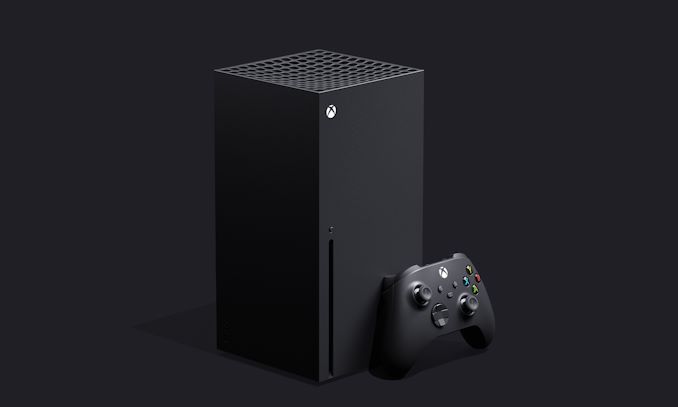


 Quote
Quote


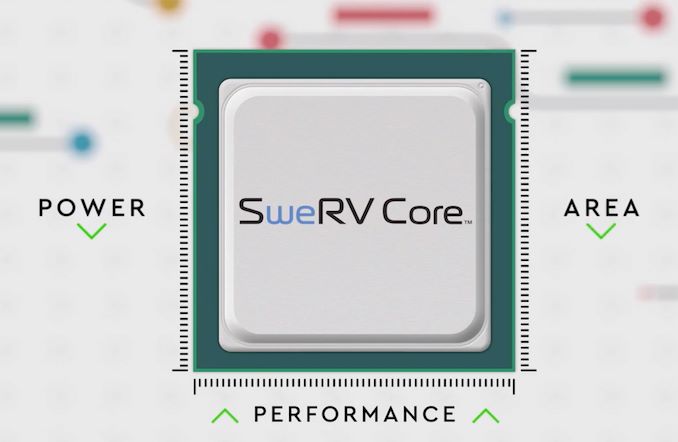

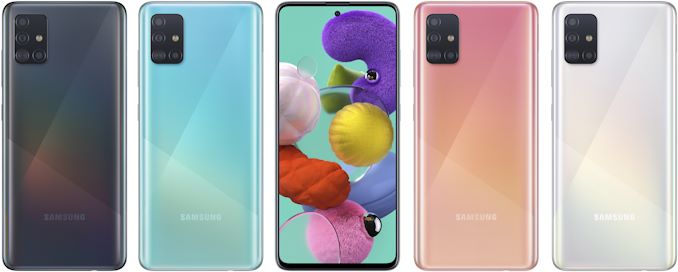

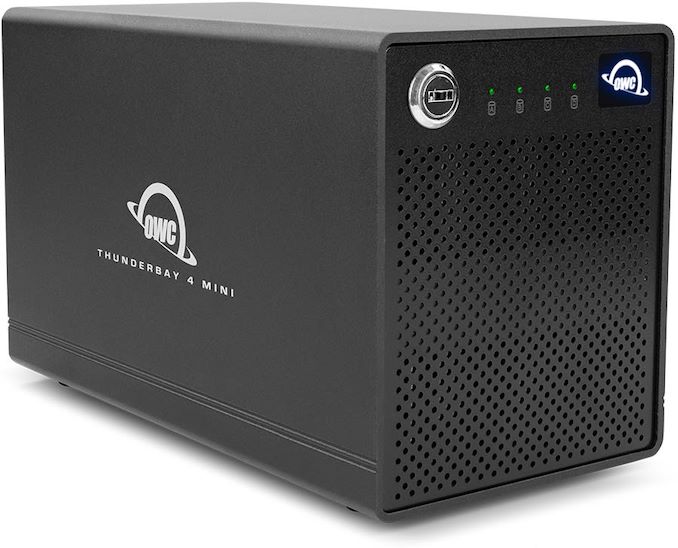
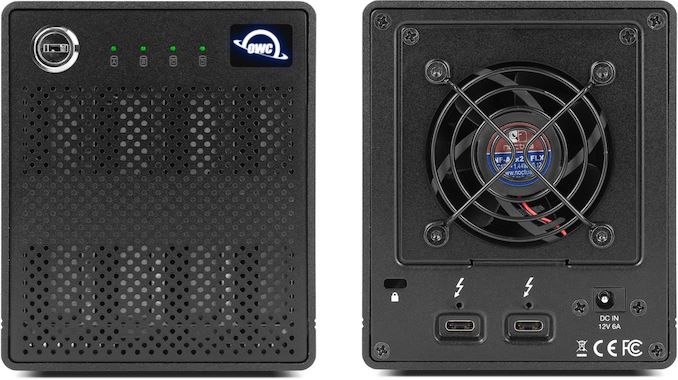
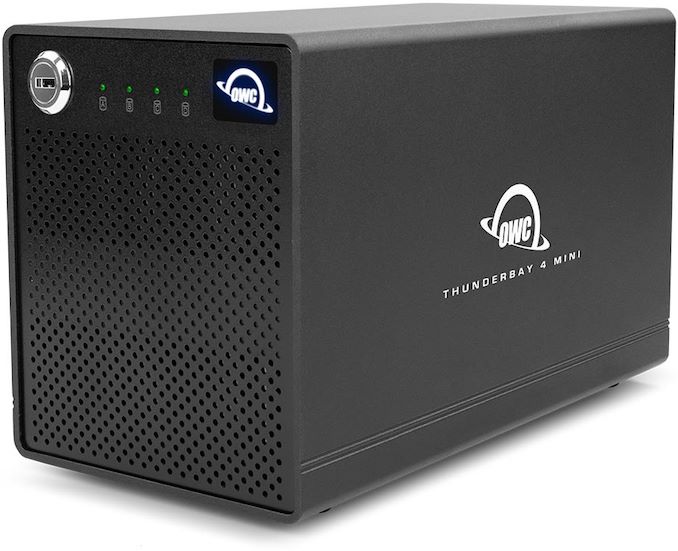
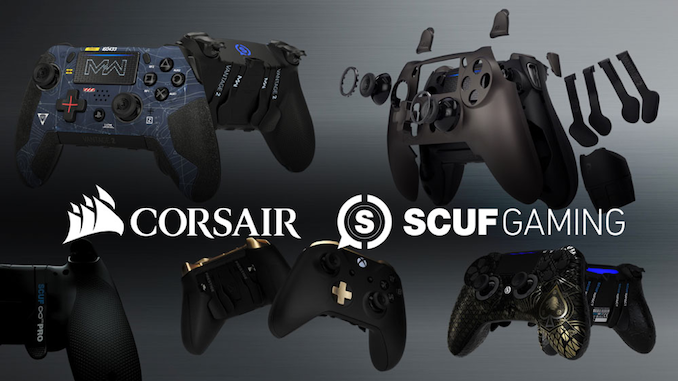

















Bookmarks